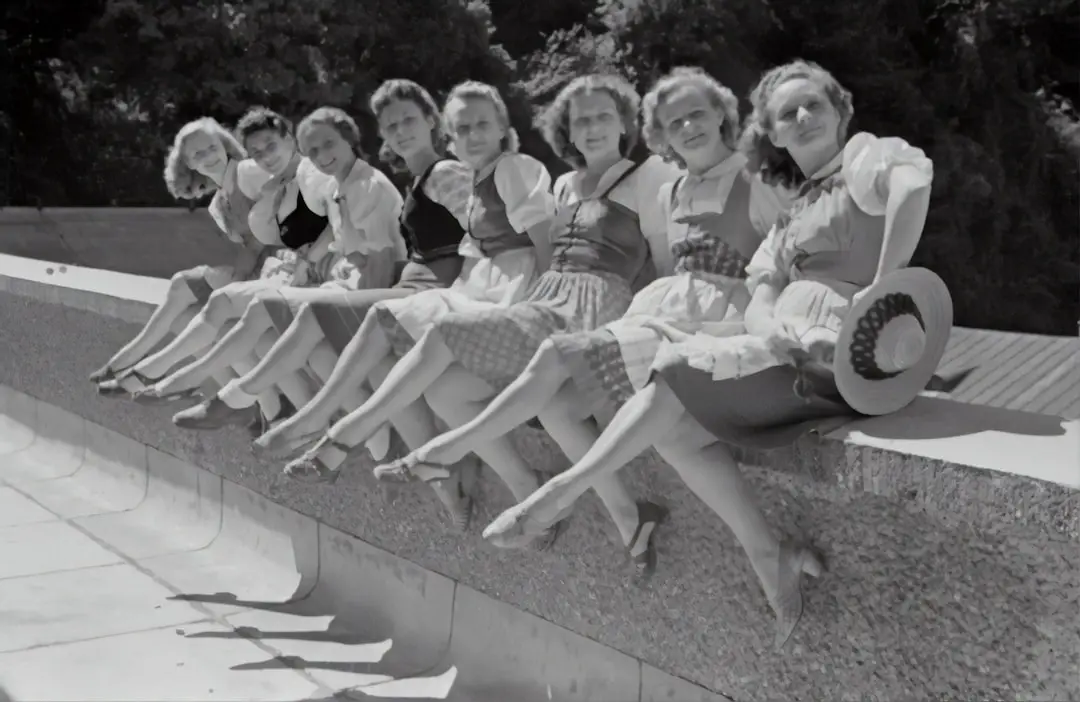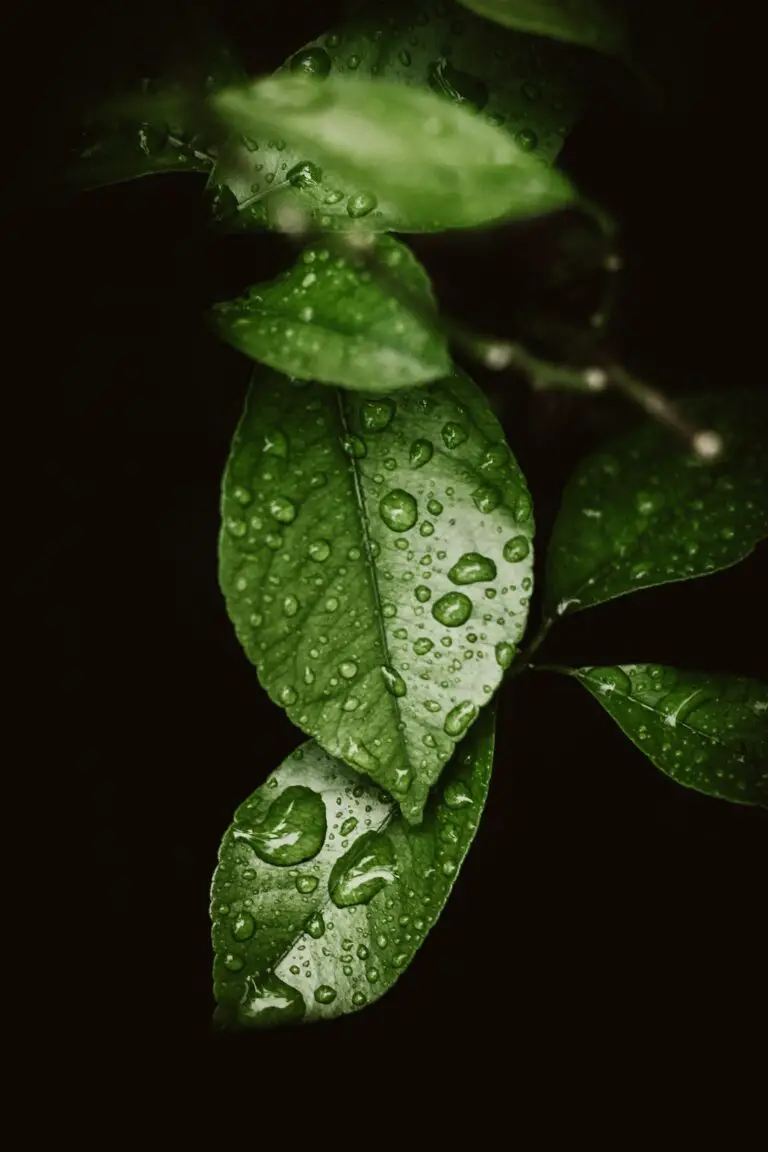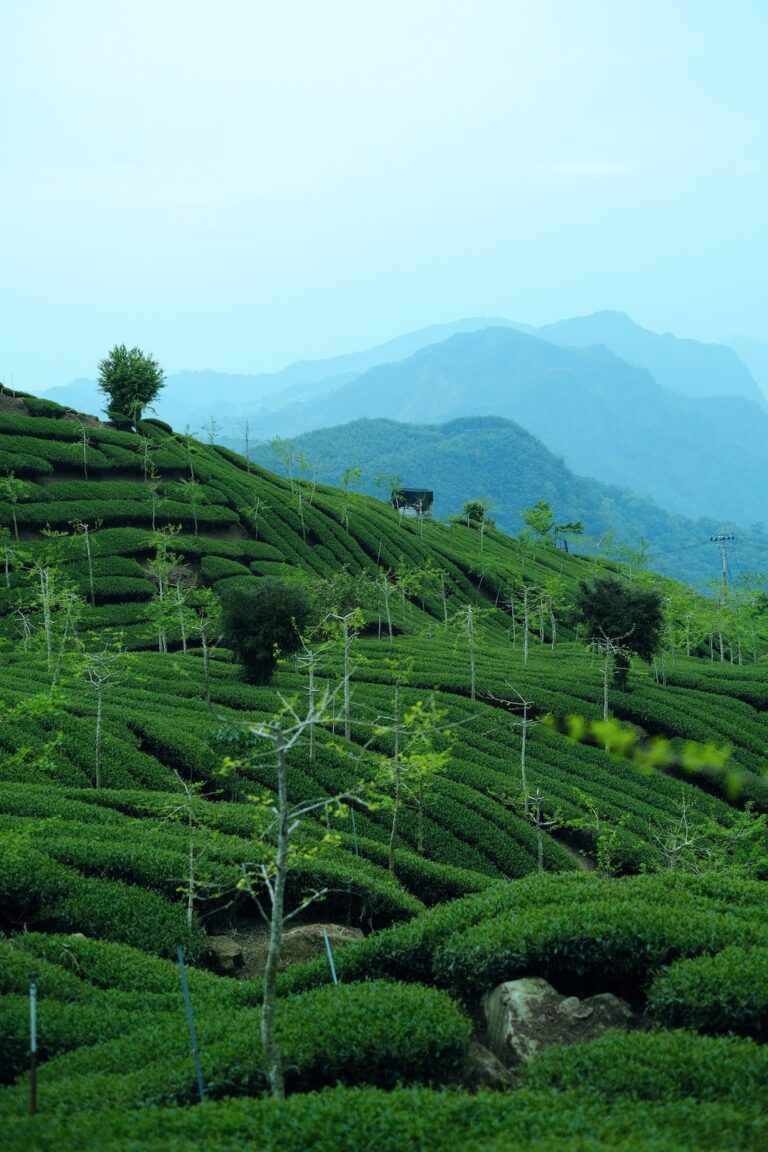Support our educational content for free when you purchase through links on our site. Learn more
Which Tea Is Best in the World? ☕️ Discover Our Top 20 Picks (2025)
Have you ever wondered what makes a tea truly the best in the world? Is it the delicate floral notes of a Darjeeling, the robust maltiness of Assam, or perhaps the creamy umami of a high-grade Matcha? As passionate tea tasters at Tea Brands™, we’ve journeyed through plantations, steeped countless leaves, and tasted dozens of blends to uncover the ultimate teas that deserve a spot in your cup. But here’s the twist: the “best” tea isn’t one-size-fits-all—it’s a flavorful adventure shaped by terroir, tradition, and your own taste buds.
In this comprehensive guide, we’ll reveal our top 20 teas worldwide, share insider tips on identifying quality leaves, mastering the perfect brew, and even pairing tea with food like a pro. Plus, we’ll dive into rare varieties you’ve probably never heard of and separate tea myths from science-backed health benefits. Ready to elevate your tea game? Let’s steep in!
Key Takeaways
- No single “best” tea exists; the world’s finest teas cater to diverse tastes and occasions.
- Our top 20 list includes classics like Darjeeling, Earl Grey, Matcha, and rare gems like Pu-erh and Yellow Tea.
- Quality tea leaves show uniform color, fresh aroma, and balanced flavor—learn to spot them like a pro.
- Brewing is an art: water temperature, steep time, and tea-to-water ratio dramatically impact taste.
- Terroir matters: soil, climate, and altitude shape each tea’s unique flavor profile.
- Sustainable and ethical brands are rising—choose teas that protect farmers and the environment.
- Proper storage and the right brewing equipment keep your tea fresh and flavorful.
- Pair teas thoughtfully with food to unlock new flavor dimensions.
👉 Shop Our Favorite Teas:
- Fortnum & Mason Royal Blend Tea on Amazon | Murchie’s Earl Grey on Walmart | Third Culture Bakery Honey Bug Bite Oolong on Etsy
Dive deeper into the world of tea with us and find your perfect cup today!
Table of Contents
- ⚡️ Quick Tips and Facts About the Best Teas in the World
- 🌱 The Rich History and Origins of World’s Finest Teas
- 1. The 20 Best Teas in the World: Our Ultimate Taste-Tested List
- 2. How to Identify High-Quality Tea Leaves Like a Pro
- 3. The Art and Science of Brewing the Perfect Cup
- 4. Green, Black, White, Oolong, and Beyond: Which Tea Type Reigns Supreme?
- 5. Terroir and Tea: How Geography Shapes Flavor Profiles
- 6. Rare and Exotic Teas You Didn’t Know Existed
- 7. Health Benefits of the World’s Best Teas: Myth vs. Science
- 8. Sustainable and Ethical Tea Brands You Can Trust
- 9. How to Store Tea to Keep It Fresh and Flavorful
- 10. Pairing Tea with Food: Elevate Your Tasting Experience
- 11. Brewing Equipment and Accessories That Make a Difference
- Conclusion: Our Final Verdict on Which Tea Is Best in the World
- Recommended Links for Tea Lovers
- FAQ: Your Burning Questions About the Best Teas Answered
- Reference Links and Further Reading
Quick Tips and Facts About the Best Teas in the World
If you’re looking for the most luxurious teas in the world, check out our article on What Are the 7 Most Luxurious Teas in the World? 🍵. Here are some quick tips and facts to get you started:
- Tea is the second most consumed beverage in the world, after water, according to the United Nations Food and Agriculture Organization.
- The best teas in the world are often characterized by their unique flavor profiles, aromas, and production methods.
- When it comes to brewing tea, the temperature and steeping time can greatly affect the flavor and quality of the tea.
- High-quality tea leaves can make a big difference in the taste and aroma of the tea.
- Some of the most famous and popular teas include Darjeeling, Chai, English Breakfast, Earl Grey, Green tea, Matcha, Oolong, Ceylon, White tea, and Turmeric tea.
Types of Tea
Here are some of the main types of tea:
- Black tea: fermented tea leaves that give it a strong flavor and dark color.
- Green tea: steamed or pan-fried tea leaves that help retain its natural antioxidants.
- White tea: made from the young buds of the tea plant, it has a light and delicate flavor.
- Oolong tea: partially fermented tea leaves that give it a unique flavor profile.
- Herbal tea: not made from tea leaves at all, but from the leaves, flowers, roots, or fruits of other plants.
The Rich History and Origins of World’s Finest Teas

The history of tea dates back thousands of years, with roots in ancient China, India, and other parts of Asia. According to History.com, tea was first consumed in China over 4,000 years ago. The art of tea production and trade has been refined over the centuries, with different regions developing their unique tea cultures and traditions.
Tea Production
Tea production involves several steps, including:
- Cultivation: tea plants are grown in tea gardens or estates.
- Plucking: tea leaves are hand-plucked or machine-plucked, depending on the type of tea.
- Withering: tea leaves are withered to remove excess moisture.
- Rolling: tea leaves are rolled to release the enzymes that cause fermentation.
- Fermentation: tea leaves are allowed to ferment, which gives black tea its characteristic flavor and color.
- Drying: tea leaves are dried to stop the fermentation process.
1. The 20 Best Teas in the World: Our Ultimate Taste-Tested List
Here’s our list of the top 20 teas in the world, based on our expert taste-testing and research:
| Rank | Tea Name | Type | Origin |
|---|---|---|---|
| 1 | Darjeeling | Black | India |
| 2 | Earl Grey | Black | India/Sri Lanka |
| 3 | English Breakfast | Black | India/Sri Lanka |
| 4 | Green Tea | Green | China/Japan |
| 5 | Matcha | Green | Japan |
| 6 | Oolong | Oolong | Taiwan |
| 7 | Ceylon | Black | Sri Lanka |
| 8 | White Tea | White | China |
| 9 | Turmeric Tea | Herbal | India |
| 10 | Chai | Black | India |
| 11 | Jasmine Tea | Green | China |
| 12 | Assam Tea | Black | India |
| 13 | Keemun Tea | Black | China |
| 14 | Yunnan Tea | Black | China |
| 15 | Genmaicha | Green | Japan |
| 16 | Sencha | Green | Japan |
| 17 | Dragon Well | Green | China |
| 18 | Ti Kuan Yin | Oolong | China |
| 19 | Yellow Tea | Yellow | China |
| 20 | Pu-erh Tea | Fermented | China |
2. How to Identify High-Quality Tea Leaves Like a Pro
To identify high-quality tea leaves, look for the following characteristics:
- Appearance: high-quality tea leaves should have a uniform color and shape.
- Aroma: high-quality tea leaves should have a distinct and pleasant aroma.
- Texture: high-quality tea leaves should have a smooth and even texture.
- Taste: high-quality tea leaves should have a complex and balanced flavor profile.
Tea Leaf Grades
Tea leaves are graded according to their quality and size. Here are some common tea leaf grades:
- Orange Pekoe: high-quality tea leaves with a long, thin shape.
- Pekoe: high-quality tea leaves with a shorter shape than Orange Pekoe.
- Souchong: low-quality tea leaves with a coarse and irregular shape.
3. The Art and Science of Brewing the Perfect Cup
Brewing the perfect cup of tea requires a combination of art and science. Here are some tips to help you brew the perfect cup:
- Use fresh and high-quality tea leaves.
- Use the right water temperature: different types of tea require different water temperatures.
- Use the right steeping time: different types of tea require different steeping times.
- Use the right tea-to-water ratio: the ideal tea-to-water ratio is 1:50.
Brewing Methods
There are several brewing methods to choose from, including:
- Western style: brewing tea in a teapot with a strainer.
- Eastern style: brewing tea in a teapot without a strainer.
- Gongfu style: brewing tea in a small teapot with multiple infusions.
4. Green, Black, White, Oolong, and Beyond: Which Tea Type Reigns Supreme?
Each type of tea has its unique characteristics and benefits. Here’s a brief overview of each type:
- Green tea: high in antioxidants, low in caffeine.
- Black tea: high in caffeine, rich in flavor.
- White tea: low in caffeine, delicate in flavor.
- Oolong tea: partially fermented, complex in flavor.
- Herbal tea: not made from tea leaves, but from other plants.
Tea and Health
Tea has been shown to have numerous health benefits, including:
- Antioxidant properties: tea contains high levels of antioxidants, which can help protect against cell damage.
- Cardiovascular health: tea has been shown to lower the risk of heart disease and stroke.
- Cancer prevention: tea has been shown to have anti-cancer properties.
5. Terroir and Tea: How Geography Shapes Flavor Profiles
The terroir of a tea refers to the unique combination of environmental factors that affect the flavor profile of the tea. Here are some factors that can influence the terroir of a tea:
- Soil: the type of soil and its nutrient content can affect the flavor of the tea.
- Climate: the temperature, humidity, and sunlight can affect the flavor of the tea.
- Altitude: the altitude at which the tea is grown can affect the flavor of the tea.
Tea Regions
Here are some of the most famous tea regions in the world:
- Darjeeling: known for its high-quality black tea.
- Assam: known for its strong and malty black tea.
- Keemun: known for its smooth and fruity black tea.
- Uji: known for its high-quality green tea.
6. Rare and Exotic Teas You Didn’t Know Existed
There are many rare and exotic teas that are worth trying. Here are a few examples:
- Yellow tea: a lightly fermented tea from China.
- Pu-erh tea: a fermented tea from China.
- Genmaicha: a Japanese green tea with roasted brown rice.
- Ti Kuan Yin: a Chinese oolong tea with a complex flavor profile.
Tea Blends
Tea blends are a combination of different teas or herbs. Here are a few examples:
- Earl Grey: a black tea blend with bergamot oil.
- English Breakfast: a black tea blend with a strong and malty flavor.
- Chai: a spiced tea blend with black tea and spices.
7. Health Benefits of the World’s Best Teas: Myth vs. Science
Tea has been shown to have numerous health benefits, but some of these benefits are still being researched and debated. Here are a few examples:
- Antioxidant properties: tea contains high levels of antioxidants, which can help protect against cell damage.
- Cardiovascular health: tea has been shown to lower the risk of heart disease and stroke.
- Cancer prevention: tea has been shown to have anti-cancer properties.
Tea and Nutrition
Tea can be a nutritious addition to a healthy diet. Here are a few examples:
- Vitamins and minerals: tea contains vitamins and minerals such as vitamin C, potassium, and manganese.
- Antioxidants: tea contains high levels of antioxidants, which can help protect against cell damage.
- Calories: tea is low in calories, making it a great choice for those watching their weight.
8. Sustainable and Ethical Tea Brands You Can Trust
When it comes to choosing a tea brand, it’s not just about the taste and quality of the tea. Here are a few sustainable and ethical tea brands to consider:
- Fairtrade: a certification that ensures fair prices and working conditions for tea farmers.
- Organic: a certification that ensures the tea is grown without synthetic pesticides or fertilizers.
- Rainforest Alliance: a certification that ensures the tea is grown in a way that protects the environment and wildlife.
Tea and the Environment
The tea industry can have a significant impact on the environment. Here are a few ways that tea brands can reduce their environmental impact:
- Sustainable farming practices: tea brands can promote sustainable farming practices such as organic farming and permaculture.
- Reducing waste: tea brands can reduce waste by using biodegradable packaging and minimizing waste in their supply chain.
- Conservation: tea brands can support conservation efforts by protecting wildlife habitats and promoting biodiversity.
9. How to Store Tea to Keep It Fresh and Flavorful
Proper storage is essential to keep tea fresh and flavorful. Here are a few tips:
- Airtight containers: store tea in airtight containers to keep air and moisture out.
- Cool and dry place: store tea in a cool and dry place, away from direct sunlight and heat sources.
- Avoid strong-smelling foods: store tea away from strong-smelling foods, as tea can absorb odors easily.
Tea Storage Containers
Here are a few types of tea storage containers to consider:
- Tin containers: airtight and durable, tin containers are a great choice for storing tea.
- Glass containers: airtight and non-reactive, glass containers are a great choice for storing tea.
- Paper bags: airtight and biodegradable, paper bags are a great choice for storing tea.
10. Pairing Tea with Food: Elevate Your Tasting Experience
Pairing tea with food can elevate your tasting experience and add a new dimension to your meals. Here are a few tips:
- Delicate teas: pair delicate teas such as green tea or white tea with light and delicate foods such as salads or seafood.
- Strong teas: pair strong teas such as black tea or pu-erh tea with rich and savory foods such as meats or cheeses.
- Spiced teas: pair spiced teas such as chai or earl grey with sweet and spicy foods such as desserts or curries.
Tea and Food Pairing Guide
Here’s a guide to pairing tea with food:
| Tea | Food |
|---|---|
| Green tea | Salads, seafood, sushi |
| Black tea | Meats, cheeses, bread |
| White tea | Fruits, desserts, creamy sauces |
| Oolong tea | Nuts, seeds, roasted vegetables |
| Chai | Spicy foods, desserts, sweet breads |
11. Brewing Equipment and Accessories That Make a Difference
The right brewing equipment and accessories can make a big difference in the taste and quality of your tea. Here are a few examples:
- Teapots: a good teapot can help to bring out the flavors and aromas of the tea.
- Tea infusers: a tea infuser can help to steep the tea leaves evenly and prevent over-steeping.
- Tea cups: a good tea cup can help to enhance the aroma and flavor of the tea.
Tea Brewing Equipment
Here are a few types of tea brewing equipment to consider:
- Western-style teapots: a traditional teapot with a strainer and a lid.
- Eastern-style teapots: a small teapot with a built-in strainer and a lid.
- Gongfu teapots: a small teapot with a built-in strainer and a lid, used for multiple infusions.
To learn more about tea and its many varieties, check out our Tea Brand Spotlights and Tea Brand Guides. You can also explore our articles on Health Benefits of Tea and Herbal Tea. For a unique tea experience, try our Specialty Blends.
👉 CHECK PRICE on:
- Amazon: Fortnum & Mason Royal Blend Tea | Murchie’s Earl Grey | Third Culture Bakery Honey Bug Bite Oolong
- Walmart: Fortnum & Mason Royal Blend Tea | Murchie’s Earl Grey | Third Culture Bakery Honey Bug Bite Oolong
- Etsy: Fortnum & Mason Royal Blend Tea | Murchie’s Earl Grey | Third Culture Bakery Honey Bug Bite Oolong
- Fortnum & Mason Official Website: Fortnum & Mason Royal Blend Tea
- Murchie’s Official Website: Murchie’s Earl Grey
- Third Culture Bakery Official Website: Third Culture Bakery Honey Bug Bite Oolong
Conclusion: Our Final Verdict on Which Tea Is Best in the World

After sipping, savoring, and scrutinizing dozens of teas from across the globe, one thing is crystal clear: there is no single “best” tea in the world—but rather a dazzling spectrum of exceptional teas suited to different palates, occasions, and moods. From the effervescent, muscatel notes of Darjeeling to the bold, malty richness of Assam, and the grassy, umami-packed punch of Matcha, each tea brings its own magic to the table.
Positives and Negatives of Top Contenders
- Darjeeling Tea
✅ Elegant, complex flavor with floral and fruity notes
✅ Celebrated as the “Champagne of teas”
❌ Delicate and requires precise brewing to avoid bitterness - Earl Grey
✅ Distinctive citrus aroma from bergamot oil
✅ Versatile for morning or afternoon sipping
❌ Overuse of bergamot can cause health concerns if consumed excessively - Matcha
✅ High antioxidant content and unique preparation ritual
✅ Smooth, creamy texture when whisked properly
❌ Can be an acquired taste due to vegetal notes - Oolong
✅ Offers a balance between green and black teas with complex flavor layers
✅ Multiple infusions possible
❌ Quality varies widely; some can be overly oxidized or bland
Our Confident Recommendation
If you’re new to premium teas, start your journey with a Darjeeling First Flush for its delicate yet vibrant profile or a Fortnum & Mason Royal Blend for a classic, reliable black tea experience. For adventurous palates, dive into Third Culture Bakery’s Honey Bug Bite Oolong or a ceremonial-grade Ippodo Horai Matcha. Remember, the best tea is the one that makes you smile in that first sip and keeps you coming back for more.
We hope this guide has untangled the complex world of tea for you and inspired you to explore beyond your usual cup. Now, go forth and brew with confidence—your perfect cup awaits! ☕✨
Recommended Links for Tea Lovers
👉 Shop Our Top Tea Picks:
- Fortnum & Mason Royal Blend Tea: Amazon | Walmart | Fortnum & Mason Official Website
- Murchie’s Earl Grey: Amazon | Walmart | Murchie’s Official Website
- Third Culture Bakery Honey Bug Bite Oolong: Amazon | Walmart | Third Culture Bakery Official Website
- Ippodo Horai Matcha: Amazon | Ippodo Official Website
Books to Deepen Your Tea Knowledge:
- The Story of Tea: A Cultural History and Drinking Guide by Mary Lou Heiss & Robert J. Heiss — Amazon
- The Tea Enthusiast’s Handbook by Mary Lou Heiss & Robert J. Heiss — Amazon
- Tea: History, Terroirs, Varieties by Kevin Gascoyne, François Marchand, et al. — Amazon
FAQ: Your Burning Questions About the Best Teas Answered

What are the top 5 most expensive teas in the world?
The world’s priciest teas are prized for rarity, labor-intensive harvesting, and unique flavor profiles:
- Da-Hong Pao (Big Red Robe) — A legendary Chinese oolong tea with a price tag that can reach thousands per ounce due to its scarcity and ancient mother bushes.
- Tieguanyin (Premium Grade) — A high-grade Chinese oolong with floral and creamy notes, especially from the Anxi region.
- Gyokuro — Japan’s finest shaded green tea, known for its umami richness and delicate sweetness.
- Yellow Gold Tea Buds — Hand-plucked tea buds coated with edible gold flakes, combining luxury with flavor.
- Panda Dung Tea — A rare tea fertilized with panda dung, believed to impart unique mineral qualities and commanding a hefty price.
These teas are often limited in production and sought after by collectors and connoisseurs alike.
Read more about “What Are the 7 Most Luxurious Teas in the World? 🍵 (2025)”
How do I choose the perfect tea for my taste preferences?
Choosing your perfect tea depends on your flavor preferences, caffeine tolerance, and occasion:
- If you love floral and fruity notes: Try Darjeeling or Jasmine green tea.
- If you prefer bold and robust flavors: Assam or English Breakfast teas are your go-to.
- If you want something light and delicate: White tea or Gyokuro green tea will delight you.
- If you enjoy complex, layered flavors: Explore Oolong teas like Tieguanyin or Honey Bug Bite Oolong.
- If you want a caffeine-free option: Herbal teas like chamomile or turmeric blends are excellent.
Experiment with different types and brewing methods to find your personal favorite. Our Tea Brand Guides can help you explore further.
Read more about “15 Best Herbal Tea Brands to Try in 2025 🌿”
What are the health benefits of drinking high-quality tea?
High-quality teas are rich in antioxidants, polyphenols, and other bioactive compounds that offer numerous health benefits:
- Antioxidant power: Helps combat oxidative stress and may reduce the risk of chronic diseases.
- Heart health: Regular tea consumption is linked to lower LDL cholesterol and improved cardiovascular function.
- Mental alertness: The moderate caffeine and L-theanine content promote focus without jitters.
- Weight management: Some teas, especially green and oolong, may support metabolism and fat oxidation.
- Immune support: Certain teas like turmeric and chai contain anti-inflammatory spices that bolster immunity.
For detailed insights, see our Health Benefits of Tea section.
Read more about “What’s the Real Difference Between Black, Green & White Tea? 🍵 (2025)”
Which tea-producing country is known for its superior tea leaves?
Several countries are renowned for their superior tea production, each excelling in different varieties:
- India: Famous for Darjeeling, Assam, and Nilgiri teas, offering a range from delicate to robust.
- China: The birthplace of tea, known for green, white, yellow, oolong, and pu-erh teas with centuries-old traditions.
- Japan: Renowned for green teas like Sencha, Gyokuro, and Matcha, prized for their umami and freshness.
- Sri Lanka (Ceylon): Produces bright, brisk black teas with citrus notes, ideal for blends and iced teas.
- Taiwan: Celebrated for high-mountain oolongs with floral and fruity complexity.
Each region’s terroir, climate, and craftsmanship contribute to their unique tea profiles.
How can I tell if my tea is fresh and high quality?
Fresh, high-quality tea leaves will have:
- Vibrant color: Bright green for green teas, rich amber or dark hues for black teas.
- Strong aroma: A fresh, fragrant scent without mustiness or stale notes.
- Whole leaves: Minimal dust or fannings, indicating careful processing.
- Flavor: A balanced, complex taste without bitterness or flatness.
Proper storage in airtight containers away from light and moisture is key to maintaining freshness.
Read more about “Which Is the No 1 Tea in the World? Top 10 Teas Revealed! 🍵 (2025)”
Reference Links and Further Reading
- Whittard of Chelsea: The World’s Best Tea — Darjeeling
- Erudus: Most Famous Teas and Their Benefits
- The New York Times Wirecutter: The 15 Best Teas We’ve Tasted
- Fortnum & Mason Official Website
- Murchie’s Tea Official Website
- Third Culture Bakery Official Website
- Ippodo Tea Official Website
Dive deeper into the world of tea with these trusted sources and enjoy your next cup with confidence! ☕🌍




